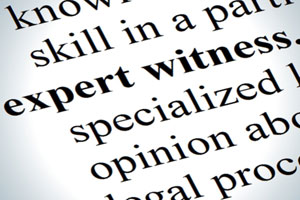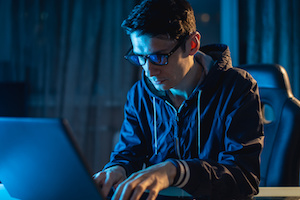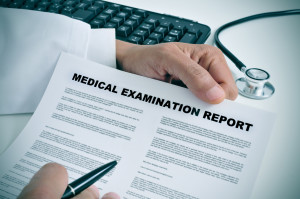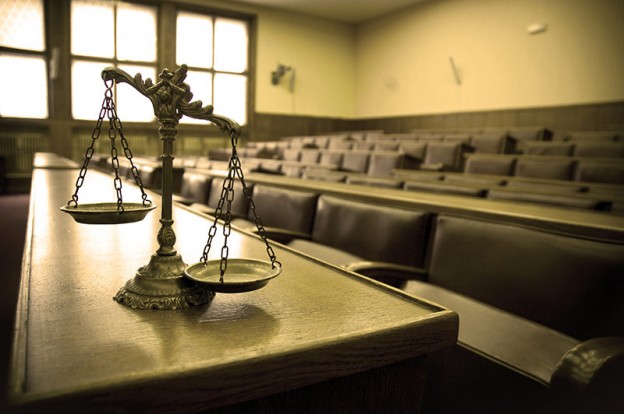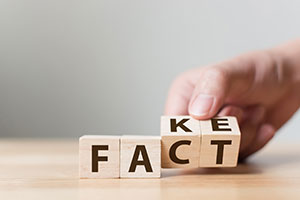We’ve all heard the saying, “a picture is worth a thousand worlds.” And most of us are familiar with the idea that there are multiple different modes of learning — that is, that people process information in different ways, and that while there are certainly verbal learners, or people who learn best by reading the written or hearing the spoken word, there are people who learn best in other ways, such as visual learners, who learn best through images or pictures.
These concepts are why demonstrative evidence is your friend in court — it’s a way to empower your expert and leverage the investment your client made in hiring them.
Black’s Law Dictionary online defines demonstrative evidence as “real evidence that doesn’t depend on a testimony as it can be seen by the jury and the court.” Other legal dictionaries and treatises definite it similarly. The key part of this definition is “can be seen by the jury and the court” — that is, it is visual evidence, whether in the form of a photograph, a schematic, a chart or graph, a model, or some other graphic representation. It can be tremendously powerful and can make or break your expert’s testimony.
Here’s the thing about demonstrative evidence: as the very term implies, it “demonstrates” something. It’s NOT fact evidence — you need that separately — but it is a way to illustrate, highlight, or call out what is important. It’s the judicial equivalent of a Powerpoint presentation: a way to emphasize what should be emphasized. That means that while it ultimately needs to tie back to — and be supported by — authenticated documentary or other fact-based evidence, or reliable witness testimony, it can and should take liberties with presentation, so that the point you want to get across is driven home with all the subtlety of a presidential campaign ad.
Judges and Jurors Love Show-and-Tell
Before getting to the practical reasons why demonstrative evidence is valuable, start with a basic concept: judges are human. They are humans who spend six, seven, or eight hours per day listening to people talk, and talk, and talk. They get — to be blunt — bored. Don’t believe it? Think about how long you can listen to strangers jabber on about situations or occurrences you have no personal knowledge of or stake in. For example, think back to the last time you were at a party and were cornered by someone who described their vacation to you practically minute by minute, or by someone who obviously thought their job in risk-assessment or logistics was as fascinating to you as it is to them (or, to be fair, think about the deer-in-headlights look in the eyes of a non-lawyer you cornered at a party and subjected to a blow-by-blow description of your last trial). Bringing out photographs or other graphic evidence will get judges to sit up and take notice in a way that another thousand words of “expert-ese” will not.
And what goes for judges goes doubly for jurors, since they (unlike judges) often have no background, experience, or context to help them understand your expert’s testimony — but they can look out and understand a photograph or simple chart. Bringing out demonstrative evidence can help prevent jurors’ eyes from glazing over, which is critical, because if they tune your expert out, why even bother having the evidence in the first place.
Your expert simply can’t get his or her point across if no one is listening to him or her. Since by the time you get to your expert, the court has typically been subjected to opening statements and a parade of fact witnesses to set the context, the judge and jurors have already used up most up of their attention span. Have mercy on them and make it easy for your expert: have the expert create and use demonstrative evidence.
Photographs: Show, Don’t Tell, What Something Looks Like
Many cases involve something’s appearance. It could be the condition of a car after an accident. It could be the contusions on the victim of domestic violence. It could be the damage to a building after a fire, or the shape a rental property is in after the tenant has moved out, or the condition of a poorly maintained staircase or walkway, etc. This is the easy and obvious case for the use of demonstrative evidence: instead of having your expert just narrate the situation (e.g. “the fire caused extensive charring to the fall behind and ceiling above the stove”), show it. The visual representation will be much more powerful and easier to grasp than any verbal narrative could possibly be.
Related cases involve comparisons between two places or objects. Say that you are defending a former commercial tenant being sued by the landlord for unpaid rent, and you want to show that the landlord failed in its duty to mitigate by asking an unreasonably high price to re-let the space. Your real estate expert could just orally describe the features of the premises in question and why they are less desirable than those of other spaces on the market at the same price — or (s)he could show and narrate photographs of the premises, showing its cramped, dark, awkward layout and contrasting it with photographs of other available restaurant space which is lighter and airier. Which approach do you think will be more effective?
A good rule of thumb is: if you can take photographs of what the expert is describing, take them and have the expert use them. And when we say “photographs,” we also mean X-rays, MRIs, ultrasounds, and so on. Essentially, if you can show what something looks like instead of just verbally describing it, it has far greater influence on the viewer. For example, if you have a personal injury case, what do you think will impact the jury more: your medical expert saying “the plaintiff had a compound fracture, which is a fracture where the skin is pierced by a broken bone,” or showing the jury a photograph of a bloody bone sticking out of the plaintiff’s leg?
The use of photographs crosses or blurs the line between actual fact and demonstrative evidence, so they will have to be authenticated by someone with personal knowledge — that is, the person who took them. And that means you need to lay the groundwork.
Lather, Rinse, Repeat & Repeat Again: Using Your Expert to Review Powerful Fact Evidence
You’ll generally have shown your photographs during your fact witness testimony. But there’s a limit to how many times you have your fact witnesses flash the same photos before opposing counsel objects or the judge him/herself tells you to move on. But if the photos are compelling, you’ll want to show them again and again — you’ll want to burn their images into the jurors’ eyes.
Have your experts show them again. There’s no real cognizable objection to the photos being shown again as your expert uses them to make some oh-so-expert-y point. You can use your expert not just for his or her expertise, but as an excuse to run your best and most affecting evidence under the fact finders’ noses again.
Graphics Which Show Spatial Relationships: Help the Fact Finder Envision What Was Where
Which is easier to understand: a map or drawing showing the location of buildings, cars, and/or people, or someone droning on and one about how “The first vehicle was in the outer northbound lane. The second vehicle was in the outer southbound lane. The second vehicle came around a 60-degree curve from the east and would have come into view of the first vehicle roughly 275 meters away . . .” etc.?
There is NO better way to show locations and spatial relations than graphically, so prepare the appropriate maps, drawings, or models (models are particularly valuable when there are three, not just two, dimensions in play — e.g. when height or elevation matters, too) for your expert and let him or her use them to show, simply, quickly, and unambiguously where the various players and pieces were. Obviously, you may need to prepare several demonstrative exhibits, to show locations at the start of an event, while it is occurring, and at the end, etc. But the goal is to be clear about what happened, so there’s no such thing as “overkill.” Either the situation is clear to the fact finder or it isn’t. If it is clear, then the effort and cost put into preparing the exhibits is well worth it. If it is not clear, then you didn’t prepare enough (or good enough) exhibits.
Blow-ups: Make the Small Big
Your expert may be testifying about fine or small points; for example, if you have a handwriting expert, he or she may be testifying about how a particular loop or curlicue differs from one hypothetical signature to another. It can be awfully hard to the fact finders to see something in the equivalent of 12-, 14-, 16-, 18 -, or even 24-point type, which is about how large most of us sign papers. On the other hand, if you blow the relevant signature elements up to 4”, 5” or taller, then everyone can see and follow your expert’s discussion of the key similarities or differences.
The same principal applies whenever any key elements are themselves small. For example, say you have a product liability case, and the part of the device/product that failed is ½” or 1” long — have a photographic reproduction of it at 10x normal scale, so that the judge on his/her bench, or the jurors in their box, can actually see it.
“Look here!”—Highlight the Critical Elements
Another advantage of demonstrative evidence is the ability to add highlighting, emphasis, even arrows pointing to the important elements or details. Not only can you blow up any small details, but you can pick them out in color or bold type, circle them, and have an arrow pointing straight at what you really want the fact finders to notice. There is no need or reason to be subtle: think about being as obvious as the OxyClean or ShamWow guys hawking their wares. You want whatever is important to “POP!” like the tagline on a late-night infomercial.
Hire Professionals—Amateur Hour Does Your Client No Favors, and Saving a Few Hundred Dollars is a False Economy
The author spent 18 years in the publishing industry. He’s personally conversant enough with several graphic and layout programs as to be able to, with a straight face, claim he can do book layout, create catalogs, or even illustrate the average math book or business text. But he’s also smart enough to know that does not, in any way, shape, or form, make him a graphic artist. The difference between your author’s best efforts and those of a professional is the same as the difference between a bright pro se litigant’s efforts and your own abilities, as an educated, trained, and experienced attorney, at litigation … which is to say there is no comparison.
Don’t think that you and your expert (unless he or she is part of a larger organization with its own internal graphics department or unit) are an adequate substitute for a professional graphic artist. Assuming there’s serious money at stake — and if there wasn’t, you wouldn’t be hiring an expert in the first place, would you? — it’s worth the investment to hire a professional to create your demonstrative evidence. Layout, presentation, emphasis … the pro will know how to make these and other elements work for your case in a way that you, or a subject matter expert, simply won’t. Think about the difference between a slick pharma, perfume, or major insurance company ad, and the ads aired on local cable TV by your nearby used-car dealer — that’s the sort of qualitative difference we’re talking about.
Summary—Demonstrative Evidence is Often What Separates the Amateurs from The Professionals
Anyone can talk to another person — e.g.. take direct testimony of an expert — and get the basic point across. But can you sell that point (and let’s be honest: litigation is selling your client’s point of view)? Pros can sell; amateurs don’t.



